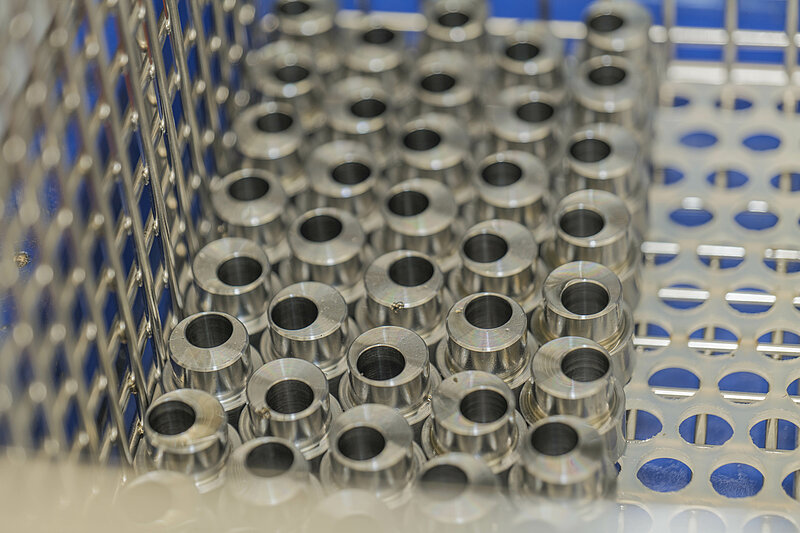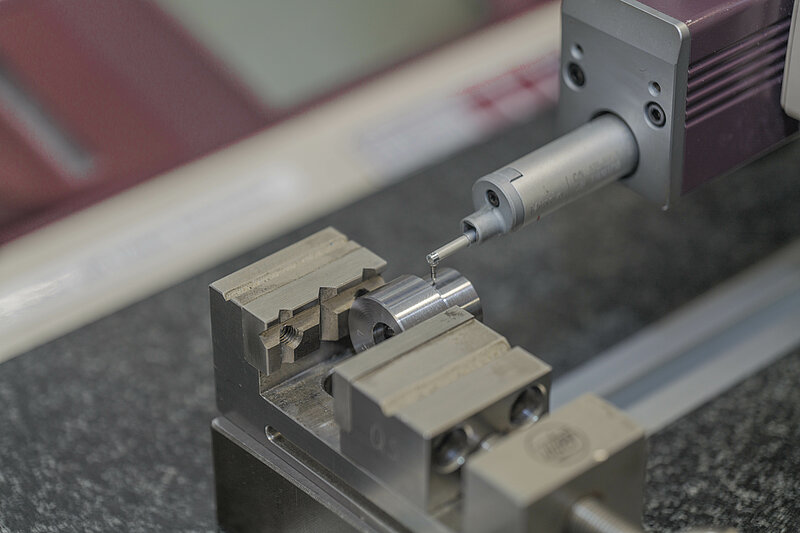Kempf Tools at BURO
High Optimization Potential with Diamond Roller Burnishing Tool:
With a simple yet innovative diamond roller burnishing tool from Kempf, BURO GmbH in Winden was able to optimize a previously complex manufacturing step in series production. The positive result is that, despite eliminating one work step, the consistent quality of the produced eccentric parts can still be guaranteed.
When it comes to "smoothing" surfaces, there are various approaches to carrying out this relatively simple process. However, in series production, the difference between good and bad becomes clear: "Here, the individual processes must, on the one hand, be carried out as quickly as possible, i.e., mechanically, and on the other hand, they must maintain consistent quality over many cycles without having to constantly change or correct the tool," explains Thomas Welte from Kempf's Technical Field Service in Reichenbach Fils. "Especially when there are high requirements for the component's properties, choosing the right tool and approach can often be problematic, and many manufacturers face significant challenges."
At BURO, thanks to its diverse machinery, all processing procedures can be implemented, allowing them to cover a wide range of machining processes in-house, including milling, gear cutting, turning, and grinding. This advantage—combined with high manufacturing quality and delivery reliability—has earned the company the trust of its customers, who have been outsourcing parts production to Winden for decades.
For example, BURO manufactures a compact eccentric component used in pumps and ventilators. This part, with length variants from 20mm to 50mm and diameters from 16mm to 38mm, was previously made from lead-containing automatic turning steel. The turning process was fully automated, but to achieve the required surface quality, complex grinding processes were necessary, involving multiple separate operations. The parts had to be removed from the lathe, inspected, and then finished in a subsequent grinding process. This was followed by a washing procedure and another dimensional inspection, making the complete machining process of the eccentric parts costly, time-consuming, and prone to a higher error rate.
After changing the material to C45 steel, BURO aimed to optimize the entire process. Tests with various indexable inserts and different radii were carried out to meet the required surface finish of less than 0.4μm Ra. This approach worked for a small number of parts, but for series production, the tool life was insufficient—the wear on the inserts was too high. The solution to this problem was found at Kempf: the diamond roller burnishing tool UDBTM-R-16, which measures only 97mm from the diamond tip to the shaft end, impressed during initial tests.
The tool's flexibility is enhanced by its ability to rotate the diamond tip up to 180° from left to right, allowing not only for the desired angle adjustment to the part contour but also enabling the tool to be used in confined spaces on turning machines. This made it possible to integrate the tool into the turning process and eliminate the need for the previously required grinding process. Compared to the turning tools previously used, wear on the diamond tip was virtually nonexistent even after processing thousands of parts, significantly improving both the tool life and part quality.
As a result, BURO is now able to produce nearly 200,000 eccentric parts per year in a process-secure, fully automated manner while guaranteeing consistent surface quality. "Due to the various advantages that come with using the UDBTM-R-16, in terms of tool life and surface quality, several of these Kempf diamond roller burnishing tools are now in use in different turning machines in Winden," emphasizes Thomas Welte. "After all, these Kempf tools are very versatile and flexible due to their design and the ability to change the angle while the tool is clamped."
![[Translate to English:] InDiamond.world](/fileadmin/_processed_/a/1/csm_InDiamond_Logo_2021_1fb017de30.png)

